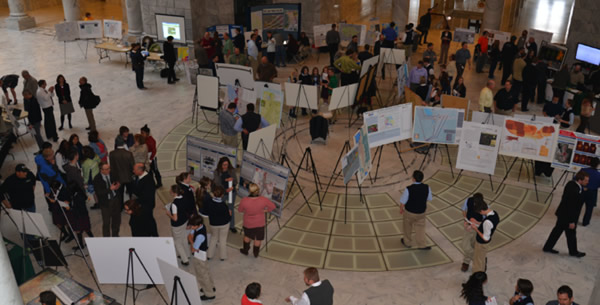Workforce Development News
February 14, 2018
Traineeship Students Gain Real Skills
There are many internship opportunities for students at all levels found throughout the Utah educational system. iUTAH traineeships offered between 2013 and the present provided something different. “We knew we had students on the research-oriented campuses in the state that could benefit from gaining skills that were transferrable outside of academia,” said Ellen Eiriksson, iUTAH’s education, outreach, and diversity coordinator. The Traineeship Program is a workforce development initiative developed to provide students with skills that transfer beyond the academic realm, and that contribute to a strong Science, Technology, Engineering, and Math (STEM) trained workforce in Utah.
“Not all undergrads go on to higher degrees or careers in academia,” said Eiriksson. “Traineeships are meant to give students skills that they can take directly to the workforce with them.” Trainees were paired with faculty and other mentors on campuses to gain experience in their laboratories or other work settings. As undergraduates, trainees served as integral members of research teams, learning new skills, and even serving as near-peer mentors, passing those skills onto incoming trainees.
The average student was engaged with the program for one year, although this amount of time varied depending on research needs. Students benefited from a team environment, training alongside graduate students and other near-peer mentors. Below are some examples of the many interesting projects that they were involved in:
- Linking sensor networks to science through ecoinformatics
- Integrating data and models for hydrologic applications
- Exploring green roof food production and green infrastructure water use strategy
- Social science data management
- Quantifying precipitation effects from the Great Salt Lake
One former trainee, Phil Suiter, currently works as a civil engineer for Ogden City. He said that he “enjoyed working in the iUTAH trainee program because it opened my eyes to all the variety of work performed for research studies,” adding that the program “helped me learn the importance of the planning and preparation needed prior to field work which has helped me be more effective as I visit my infrastructure improvement sites.”
Another trainee, Natasha Griffin, worked on the GAMUT project in the Provo River, which she says "helped me to gain experience in doing fieldwork and collaborating with other researchers, which made me more confident about pursuing my own projects. I'm now working on two publications of my own as I finish my senior year, after which I'll head to graduate school in aquatic microbial ecology."
From a faculty perspective, mentors appreciated that the program was not limited to a summer session, so students were available for as long as they were needed. One mentor said “we enjoyed the consistency and enthusiasm that traineeships brought to the lab. The trainees always wanted to learn new skills and were always eager to help in the field and lab."
“As an iUTAH trainee I was responsible for installing, maintaining, calibrating and troubleshooting a wide variety of environmental sensors and equipment,” said Brett Boyer, trainee from 2015 – 2017. “I grew confident that with time and effort I could become an expert on a given piece of equipment and use my knowledge to solve any issues that might come up. I also worked on a challenging project developing a self-contained sensing and datalogging system that greatly increased my programming and troubleshooting experience.” These skills helped Boyer secure a position as a control systems engineer, working with heavy electrical equipment and programming controllers for a gold mining project in Mexico.
The iUTAH traineeship has involved 31 students to-date, many of whom are now employed in water-related technical fields, or continued their educations in graduate school both in Utah and neighboring states. These students benefited from access to iUTAH's diverse range of research and cross-institutional collaboration.
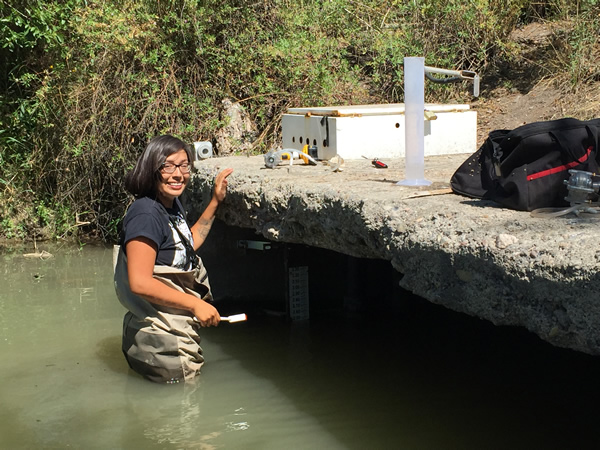
August 3, 2016
Just Add Water: iUTAH's Summer Institute Engages Students and Teachers

As the fourth and final year of the iUTAH Summer Research Institute came to a close in July 2016, students, teachers, and faculty members reflected on the impact the program has had on them. Among the articles written about the weeklong program, the U’s article said that “A week of hands-on science projects changed the way Jose Galang, a junior at Juan Diego High School in Draper, thought about science. ‘I used to think that scientists were really smart people just doing research and experiments by themselves,’ he said. ‘I never realized there were so many people working together to solve problems.’ ”
Galang was among nine high school students who participated in the National Science Foundation funded-iUTAH summer research institute July 11-15, 2016. The institute brought together high school students, secondary education teachers and undergraduate students to conduct research on water sustainability in Utah under the direction of faculty, postdocs and graduate students from universities across the state.
The group got a firsthand look at what research looks like in several disciplines. On the first day, they recorded observations about the conditions along Emigration Creek and collected water samples. The second day, they learned how to trace the origin of fruits and vegetables by analyzing isotopes in the water content. The third day, they divided into groups across the valley and conducted social science research by surveying people about their access to water. The week culminated in a poster session, where participants presented their work and findings.
‘This program provides a really unique opportunity to bring together students and educators from all along the STEM pipeline,’ said Louisa Stark, director of the iUTAH Summer Research Institute and U professor. ‘There was a lot of peer mentoring going on between the high school students and undergraduates and among the secondary education teachers and the university faculty.’ ”
The article includes comments by other students and Rachel Gabor, iUTAH postdoctoral researcher, and can be read in its entirely below.
Press: UU News | Deseret News | KUSU Radio
February 10, 2015
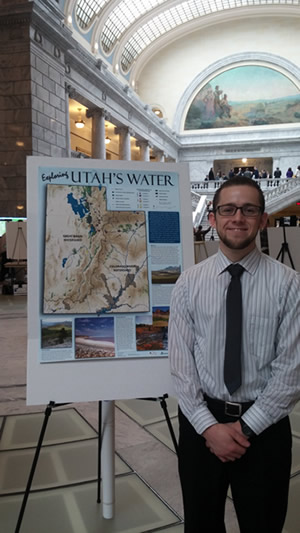
Timothy Beach, an undergraduate student mentored by Sarah Null in the Watershed Science Department at Utah State University, represented iUTAH at this year’s Maps on the Hill event at the State Capitol. Tim was an iUTAH iFellow last summer. During his research, he created a Utah water map with the assistance of Utah Valley University and iUTAH scientist Suzanne Walther and the sponsorship of iUTAH.
His water map describes statewide water resources, demands, and management to help visualize Utah's current and future water scarcity challenges. Tim presented his water map in English and Spanish to gain more access to a more diverse audience.
The 4th annual Maps on the Hill event is supported by the Utah Geographic Information Council (UGIC) and AGRC (Automated Geographic Reference Center).
This event held on January 28, 2015 offered a good opportunity for students and professionals to share maps, mapping tools, and mapping projects with elected officials, fellow practitioners, and the public. Participants included both individual mapping projects and organizations.
The event included a map display event that was held the first Wednesday of the 2015 Legislative session. The focus of the event was presenting interesting maps or map technology projects that are applicable to a wide audience.
According to Tim, “The presentation on the Hill went well! The few hours I was there ended up being a pretty good experience for me. School groups, legislators, and the general public were all there. There were a good amount of 9th graders that were interested in the map; they asked lots of questions about dams, water usage throughout the state, and GIS/map making. I brought some extra copies of the poster to give out to people and ended up giving two maps away to legislators, which I felt was a success. A few of the people even asked if it was available online. I also had a lot of good conversations with professionals who work with GIS and I think overall, Maps on the Hill was a success.“
February 9, 2015
Graduate Student Spotlight: Taya Carothers, USU
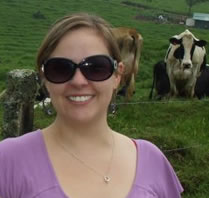
Taya grew up in Indiana and received her Bachelor’s degree, from the University of Southern Indiana in International Studies, and Spanish. While pursuing a dual-Master’s degree in Natural Resources and Sustainable Development from American University and the U.N. University of Peace,Taya became interested and involved in water issues at the global level. This experience drew Taya to the Sociology program at Utah State University and specifically the iUtah project.
She is pursuing her PhD in sociology under the guidance of Dr. Courtney Flint. Currently, Taya is excited to explore more about water governance in the U.S. and human dimensions of water in Utah. This includes looking at people’s perceptions of their vulnerabilities related to water resources as well as discovering how Utahans value water. Taya is currently using results from the iUTAH household water survey to discover respondent characteristics that can be used as indicators for specific water questions. This will help guide her next project that looks to pursue better ways to incorporate all of Utah’s voices related to water. Beyond research, Taya is enjoying getting to know this part of the Western U.S.
December 23, 2014
Graduate Student Spotlight: Trinity Stout, USU
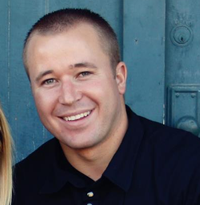
Trinity is a first year graduate student under Dr. Bethany Neilson in Civil and Environmental Engineering at Utah State University. His research interests include understanding the spatial and temporal variability in groundwater/surface water interactions. Trinity grew up on a small farm in the southern Utah town of Hurricane, where he saw first-hand the importance of water use and conservation. He later developed an interest in research while completing his undergraduate degree at Utah State, where he chose to join iUTAH and become part of a larger research effort focused on water sustainability. When he is not working or studying, Trinity enjoys fly fishing and hiking with his wife, or working on projects around the house.

